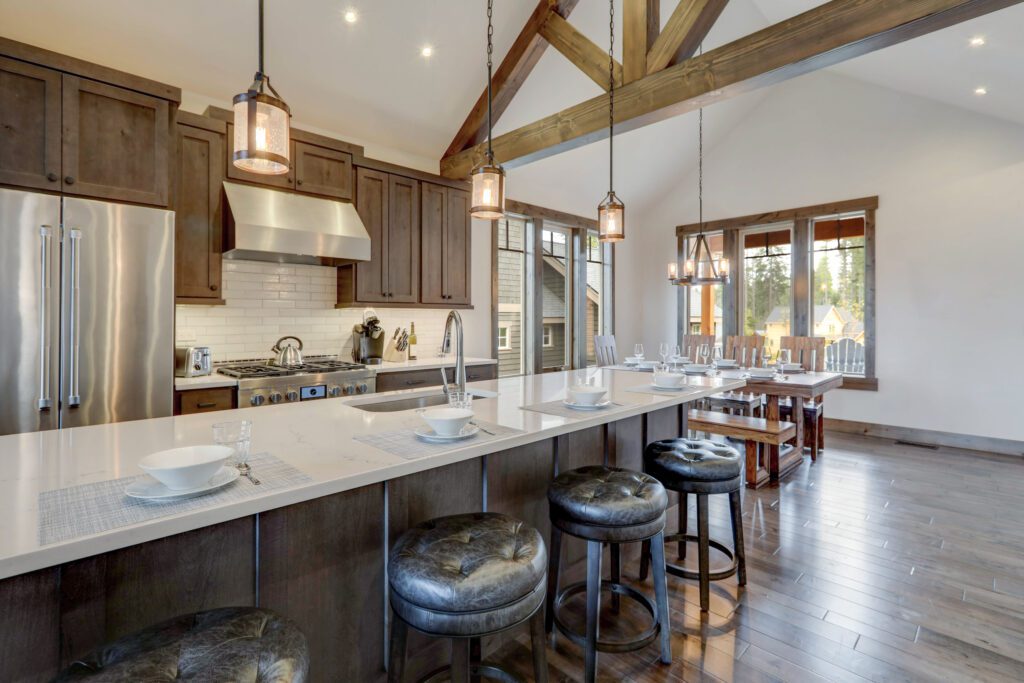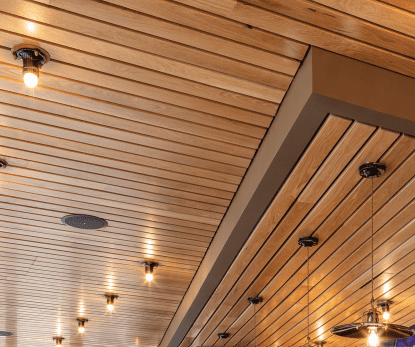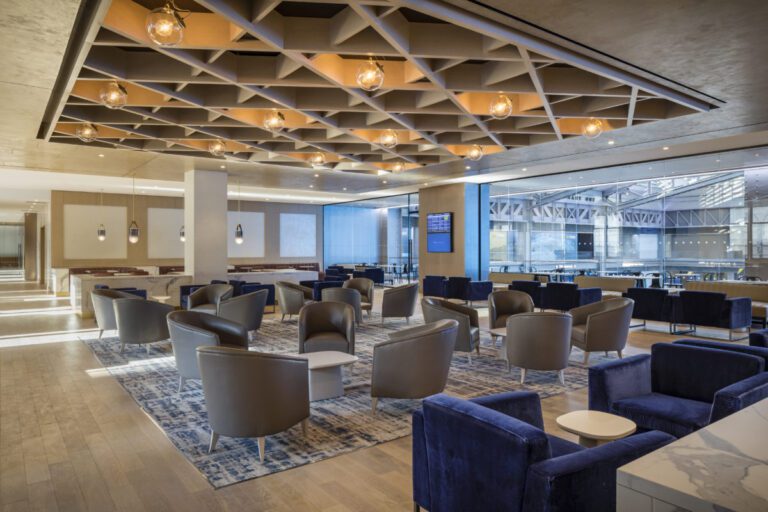In commercial settings, shared common areas contribute to the greater good for all of the business owners, workers, and customers who use the space. The design of shared areas should be attractive, welcoming, and practical. One feature that helps designers meet these objectives is wood walls.
If your commercial common area requires a design that’s unique, elegant, and functional, consider a wood wall system. In the sections below, we’ll make our case for wood as the ideal wall material; we’ll cover the benefits of wood wall designs in commercial common areas, along with tips for choosing the right wood and developing a design vision.
Benefits of Wood Wall Designs in Commercial Common Areas
Wood has a number of benefits over other wall material options. Wood is beautiful, presenting varied hues and grain patterns. Each board is unique, making every wood project a one-of-a-kind. Furthermore, wood is versatile and customizable, especially in the hands of experts.
Along with its aesthetic benefits, wood offers practical and functional advantages. These include environmental sustainability, easy maintenance, durability, and superior acoustic qualities compared to other materials such as plaster or concrete.
Wood building materials, when properly showcased, also contribute to biophilic design—the use of natural materials and nature-themed features to create a sense of connection with nature in human spaces. In workplaces, biophilic design is associated with stress reduction and improved productivity.
Selecting the Right Wood Type for Your Project
Planning a wood panel design starts with selecting a wood. Factors to consider include:
- Budget
- Aesthetic preferences (color, grain)
- Durability requirements
- Sustainability
Wood selection is often narrowed down by considering either hardwoods or softwoods.
Hardwoods, in general, are dense and heavy due to their slow maturation process. As a result, hardwoods are durable and resistant to various types of damage, such as wear and tear or humidity damage. Popular hardwoods include oak, walnut, and maple.
Softwoods are considered less durable than hardwoods, although not to the extent that they should be disqualified from consideration in design projects. On the plus side, softwoods are widely available, affordable, and easy to work with. Popular softwoods include cedar and pine.
Wood Wall Design Styles and Patterns
Wood walls come in many styles and can be custom-designed. Popular styles and patterns include:
- Linear panels – straight lines with consistent endpoints
- Staggered or offset patterns – straight lines with varied lengths or endpoints, so that parallel strips are offset
- Herringbone and chevron designs – chevron is an inverted V pattern; herringbone is a similar pattern that alternates top and bottom positions at intersections to create additional complexity
Between various panel designs, wood choices, stain hues, and customizations, there are endless possibilities for creating unique combinations and styles.
Integrating Wood Walls with Other Materials and Design Elements
Wood is especially attractive when used in combination with other design elements, such as glass, metal, or stone. Often, wood is featured in a primary role with these other materials appearing around the edges or in intervals.
To fully embrace wood-centric biophilic design, elements like living plants, green walls, and artistic lighting features can be used to create vibrant and colorful aesthetics.
Creative Applications of Wood Walls in Commercial Common Areas
Wood walls should be considered for any common spaces that call for enhanced aesthetic and acoustic qualities. Areas that benefit from wood panel systems or other wood applications include:
- Reception and lobby areas
- Break rooms and kitchenettes
- Collaborative workspaces
- Conference and meeting rooms
- Hallways and corridors
- Employee lounges
Need inspiration? Check out Rulon International’s project gallery to view some spaces that have been transformed by wood walls and ceilings.
Maintenance and Care for Wood Wall Designs
Wood walls are advantageous in shared spaces because they require minimal maintenance. Compared to textured paint, wood is smoother and collects less dust. Wood walls can be easily cleaned with a cloth and a gentle cleaning solution (water plus mild soap or white vinegar).
Like any surface, wood suffers wear and tear over time and can be damaged by excess moisture or humidity.
Fortunately, wood is highly receptive to low-effort fixes for minor issues. Minor stains can be scrubbed out, while scratches and bruises can often be buffed away. When more significant wear and tear accumulates, wood walls can be professionally refinished to restore their condition.
Get Wood Wall Designs for Your Commercial Common Area
For your commercial design project, Rulon International can help bring your vision to life. Our state-of-the-art wood panel systems create spectacular indoor spaces, exceeding expectations for aesthetics, functionality, and sustainability. To learn more, contact Rulon International today to discuss your project with a sales representative.





